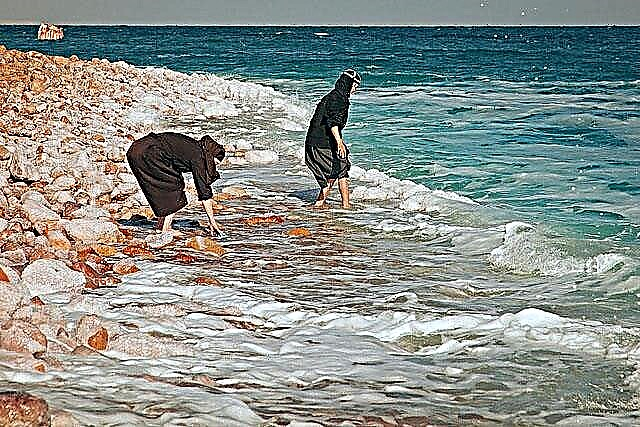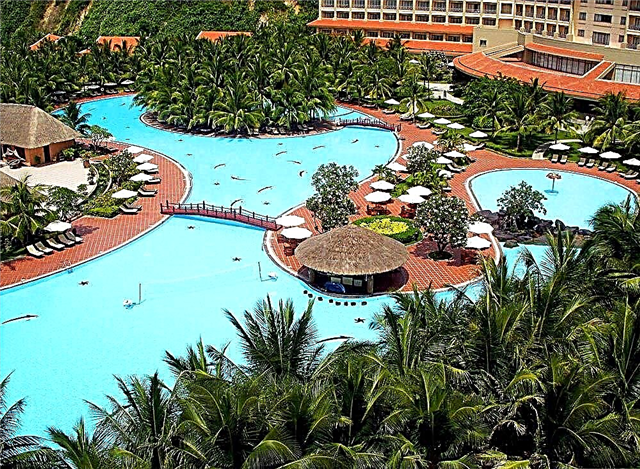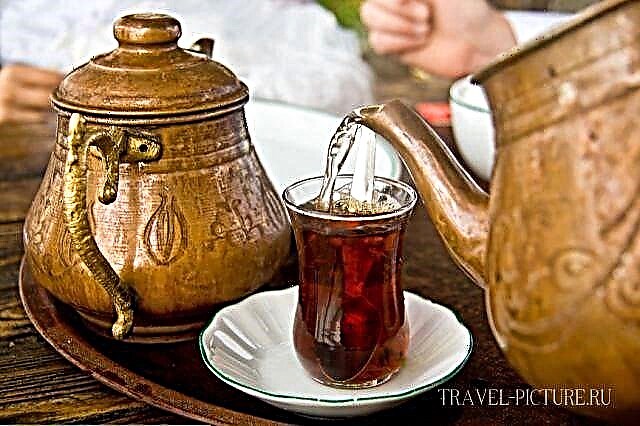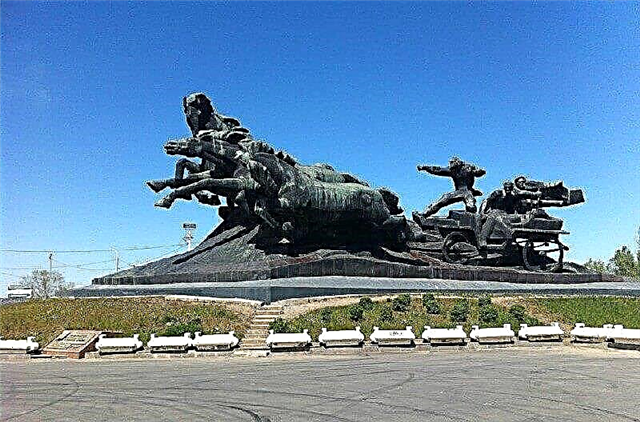The Rostov region is not a particularly popular tourist destination. Endless steppes, in which the Slavs fought with nomads for centuries and in which the Cossacks were born a little later. The most dramatic and bloody events of the Civil took place here. During the Great Patriotic War, the Don land was abundantly watered with the blood of the fascist invaders and our soldiers-liberators.
A lot of famous people came from here, offhand many will name Chekhov from Taganrozh and Sholokhov from Veshenskaya. Naturally, museums, memorials and reserves are dedicated to all famous people and significant events. Among other things, the Rostov region is a very beautiful land, where you can still find pristine nature that has not changed for thousands of years.
The most interesting and beautiful places in the region
List, photos with names and descriptions of popular attractions!
Ascension military cathedral in Novocherkassk
The year of opening - 1905. The cathedral is long-term, its construction began in 1811. Located in the center of Novocherkassk on the top of a hill. In good weather, gilded domes and crosses inlaid with rock crystal are visible from tens of kilometers away. The interior decoration was completely restored according to pre-revolutionary photos in 2005. The tombs of outstanding Cossack warriors are also located here. The temple is active, the visit is free.
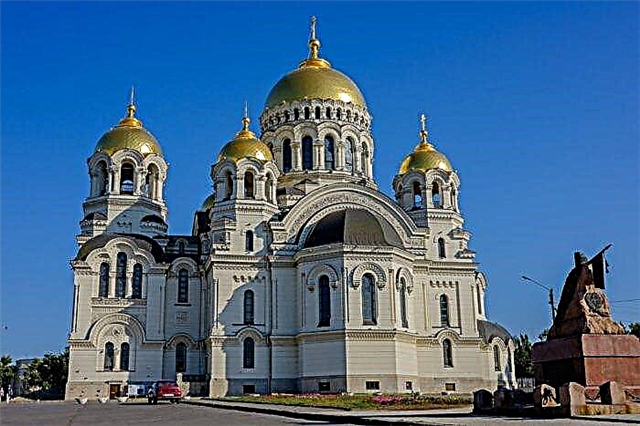
Archaeological Museum-Reserve "Tanais"
Created in 1958. Located 30 km west of the regional center - Rostov-on-Don, the ancient urban settlement of Tanais has become the largest archaeological reserve in the Don region. There are five open-air expositions: the settlement itself, a hall from the times of the Scythian-Sarmatian period, a hall of ethnic groups (life, traditions, beliefs), diverse exhibitions and the history of the study of an ancient settlement.

Don't miss: 45 main attractions of Rostov-on-Don.
Novocherkassk Museum of the History of the Don Cossacks
The year of foundation is 1886. The collection contains 150 thousand exhibits, moreover, dedicated not only to the Cossacks. The expositions include ancient fossils, weapons, armor, coins, stuffed animals of the local fauna, a collection of porcelain, the legendary Don reeds, the height of the building's floor under the ceiling is more than 8 meters. It is divided into themed rooms, including a huge collection of items from the Tsarist times, the Revolution and the Second World War.

Aksay military history museum
The museum was founded in 1948. Started as a small school archeology museum. Now it consists of 4 complexes: a Cossack kuren, customs, post office and the military-historical part itself. Most of the exhibits are finds from excavations near Aksai, including those raised from the sites of the bloody battles of the last war. There are more than 20 thematic expositions: from numismatic to weapons.

Volgodonsk Museum of the History of Don Folk Culture "Cossack Kuren"
Year of opening - 2003. A subdivision of the local ecological history museum. The basis was the traditional Cossack kuren in the village of Krasny Yar, now part of the city of Volgodonsk. Items of traditional Cossack crafts and everyday life of the Don Cossacks are presented here. The building itself is completely authentic to the Cossack dwelling of the last century (layout, decorations, decoration), although it was literally restored from ruins.

Memorial complex "Kumzhenskaya Grove"
Year of construction - 1983. Dedicated to the soldiers of the Red Army, who fell during the liberation of Rostov-on-Don in 1941 and 1943. The most terrible battles of those military operations took place here (strategic direction). Founded at the mass grave of the fallen, a separate part of it is a huge gravestone with carved data of the fallen soldiers. The sculptural composition itself is made up of figures similar to the real liberators of the city, heroes of the Soviet Union.

The estate-museum of M.A.Sholokhov in the village of Vyoshenskaya
The museum was founded in 1984. In 1942, a bomb hit destroyed the family nest of the Sholokhovs, and the writer's mother was killed. The house was completely restored in 1948 and was the place of work of the Soviet classic. Every thing here belongs to Mikhail Alexandrovich, and his grave is also located here. The museum is conventionally divided into two parts: the estate itself and a garage with cars that belonged to the author of The Quiet Don.

Monument "Tachanka-Rostovchanka"
The year of opening - 1977, the date is not accidental - to the 60th anniversary of the revolution. Located at the southern entrance to Rostov-on-Don, it is dedicated to the soldiers of the First Cavalry of Budyonny, who fought here with Denikin's Volunteer Army. Originally plaster, covered with copper sheets. Renovated in 2009 with complete preservation of details. The fifteen-meter-high monument has become one of the city's business cards; a number of local traditions are associated with it.

Azov Historical, Archaeological and Paleontological Museum-Reserve
A huge museum in the center of Azov, which includes a number of objects. There are about 320 thousand exhibits, some of them are absolutely unique, for example, skeletons of fossil dinotherium and a rare species of mammoths. Other paleontological finds are 250 million years old. In addition to antiquities, the expositions show objects of the activity of people who inhabited the Azov coast: weapons, dishes, textiles, numismatic rarities, objects of art.

Powder magazine in Azov
The year of opening - 1967. Rebuilt on the site of an abandoned artillery cellar in 1770. The exhibits of the museum are appropriate: guns of that era, an exposition about the development of domestic weapons, various auxiliary artillery devices and devices (banniks, barrels, sights, gun carriages). They come here and look at the diorama by Chernyshov about the capture of Turkish Azov by the troops of Peter I.

Botanical Garden of SFedU
Organized in 1927. There is a huge botanical garden in the valley of the Temernik river flowing through Rostov-on-Don. There are 6,500 species of flora, 1,600 of them are tropical and subtropical species in the park greenhouse. The collections of plants are divided into thematic expositions, such as trees, flowers, medicinal and giving essential oils, endemics of the Azov steppes and more.

Park Loga in the farm Staraya Stanitsa
Year of creation - 2012. Nicknamed "Little Switzerland" park in Logovaya Balka near Kamensk-Shakhtinsk. Created on the private initiative of a local entrepreneur with its own funds. On the 22 hectares of the garden and park zone, there are many different objects: sculptures, mini-waterfalls, decorative buildings. The entrance is free, a separate asphalt road leads to the park, there is a convenient parking.

Chekhov's house in Taganrog
Year of creation - 1926. The future writer was born in this small wing. There are a number of exhibits that belonged to Chekhov, for example, his gymnasium report card and school essays, a number of personal belongings. The entourage of the times of the Taganrog period of the life of young Anton Pavlovich and partially of his works has been restored in the house: the area around the building is a cherry orchard.

Museum of railway equipment of the North Caucasus Railways in the open air
The year of opening - 1960. On the outskirts of Rostov-on-Don, on the site of the former station Gnilovskaya, there are 53 exhibits directly from the rolling stock: several pre-war steam locomotives, electric locomotives, diesel locomotives, railcars, tractors and hundreds of other items - equipment, tools of railway workers, etc. Almost everything is in working order, is in conservation. The special pride of the exposition is the heating car, in which soldiers were transported to the Great Patriotic War.

Museum "Shop Chekhovs" in Taganrog
Year of foundation - 1975. During the residence of the Chekhov family, a grocery store was located here on the first floor, and living quarters on the second.A number of works by Anton Pavlovich are based on the stories of the shop's visitors, which he heard at a young age. Here is the period of the writer's adolescence, the interior has been restored, several family photographs and personal belongings of the Chekhov family are collected.

Alekseevskie gates in Azov
The main fortress gate of Azov was built in the 17th century, excavated and restored in 1935. With a part of an earthen rampart and a ditch, this is the only surviving part of the fortifications of the former Turkish fortress. The Alekseevskaya gate was rebuilt several times, now their stone version of 1805 is preserved, painstakingly restored according to the surviving drawings from the time of their construction.

Mound of Cossack glory with a monument to General Yakov Baklanov
Year of opening - 2008. Located on the embankment of the shallow Sukho-Solenovsky Bay, dividing Volgodonsk into two parts, it is dedicated to the legendary Yakov Baklanov. The complex consists of a seven-meter equestrian statue of the general, a mound with bas-reliefs and a bronze saddle with a cap at the pedestal of the main monument. The memorial is located near the local shopping and entertainment center; there is a convenient parking lot on the embankment itself.

Paramonovsk warehouses
A complex of warehouse buildings built in the 1850s by engineers Shulman and Yakunin. Before the collapse of the USSR, they were used for their intended purpose, a little later they acquired the status of a historical monument. Now abandoned, recognized as an emergency structure, there is talk about dismantling. It is recommended to visit only during daylight hours, preferably in groups: because of the specific contingent who have chosen the ruins.

Ethno-archaeological complex "Lost World"
Consists of two expositions. The first is the "Trail of History", a fascinating journey into the early history of mankind: visiting reconstructions of dwellings of the Bronze Age, acquaintance with the way of life of people of the Stone Age, excursion to the mound and acquaintance with the military traditions of their ancestors. The second - "Cossack village", all about the Cossacks: life, crafts, war. The organizers promise the effect of immersion in the story completely

Novocherkassk Ataman Palace Museum
The year of opening - 2001. Earlier, the Novocherkassk administration was located in the building of the 19th century, before that the chief chieftain lived here and received distinguished guests. Now on the first floor of the museum there is an exposition related to the participation of the Don Army in wars and conflicts; on the second floor, the ataman's apartments, a dining room, a living room, an office have been restored, and a memorial room has been created for the leader of the White Guard General Kaledin.

Karginsky memorial and historical complex
Year of foundation - 1984. In the village of Karginskaya there is the Sholokhovs' estate, where Mikhail Alekseevich spent almost 16 years, starting from 1910. Here the "Don Stories" were written and the idea of "Quiet Don" appeared. The building itself and the interior decoration are completely identical to the time when the writer's family lived here. Nearby there is a parish school - the place of Sholokhov's training, which also became part of the museum-reserve.

Reserve "Zolotye Gorki"
An ancient settlement of the VIII century, presumably Khazar. It was discovered in the eighties and immediately received the status of a reserve. Excavations are going on now, therefore, during the season, visitors have the opportunity to observe the work of archaeologists. Plus, the status of a protected object made it possible to preserve the pristine Don nature here and made the reserve an excellent place for hiking.

Lake Manych-Gudilo
A huge salt lake that previously connected the Caspian with the Black Sea. The area is practically deserted, because life here is literally in full swing. Due to the mineralization of the soil, there are practically no trees here, the vegetation is herbaceous. The main attraction is the Water herd of feral horses, called "mustangs", living on the Manych island. They go to Bird Island to see rare birds.
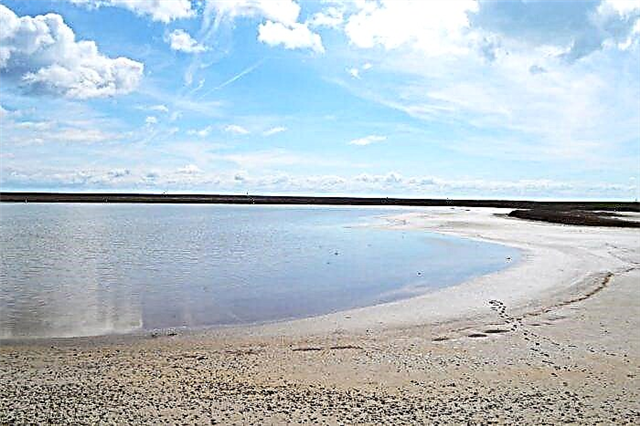
Mountains Two Sisters in Belaya Kalitva
These mountains, standing on the picturesque bank of the full-flowing Seversky Donets, were nicknamed sisters for their amazing similarity. Naturally, there is a legend explaining their origin. In addition to the opportunity to admire the scenery, people come here to "catch" UFOs. They say that brothers in mind appear here most often. And also - to look for the enchanted treasure that the Cossacks who were returning from a raid on the Krymchaks or Turks buried.

Surb Khach Church in Rostov-on-Don
It was opened in 1792. It was built by Armenian settlers from Crimea on a high Rostov hill near Temernitskaya Balka. At the foot there is a spring with a font, which has become a popular place for Epiphany bathing among Rostovites. The temple has a small necropolis where prominent Armenian figures are buried. After the restoration in 1972, a museum dedicated to Russian-Armenian friendship was opened at the temple with 10 thousand exhibits on display.



